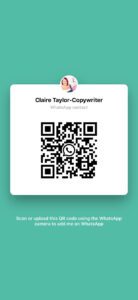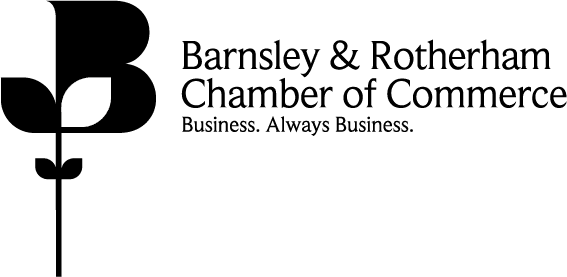The term ‘copywriter’ has become somewhat universal for someone who provides writing services these days. But with the massive rise in content over the past few years, there is now a definite difference between a copywriter and a content writer.
The different types of writer
Most people know what a journalist does. They write about the news and current affairs for publications such as the tabloids and magazines.
Columists fall into a similar category. Critics also usually writer for publications.
PR is another type of writing altogether. Many copywriters and content writers can write press releases, but someone who works in PR… well, they have the relationships with editors and so their email will always get opened. It gives their clients a much greater chance of the press release being published.
You then have ‘academic writers’ who will write research and white papers.
Technical writers are specialists in their field.
Corporate or business writers will put together reports and proposals.
We then come to playwriter and screenwriters… you watch what they write.
Poets write poetry.
Lyricists write the words to songs, so you listen to their words.
Novelists write fiction, whilst biographers write about an individual’s life, and a ghostwriter writes on behalf of someone else.
That really just leaves copywriters and content writers.
Marketing and sales words
Whilst some copy and content writers have niche industries they write about, many are generalists.
It really depends on their background and experience.
I have seen many specialists turn their hand to copywriting and make an extremely good living from it. How much money is there to be made depends on the sector.
Copy and content writers write marketing and sales words.
As a rule of thumb, content writers tend to write for marketing purposes and copywriters for sales.

What is copy and what is content?
Short form social media posts are content.
Long form blogs and articles are content too.
Most marketing emails are content… with the exception of sales sequences.
A sales page (sometimes called a landing page by web designers) is direct response copy. It’s the purest form of sales copy as it is designed to make the reader ‘buy now’.
Direct response copy is psychologically based and follows a format which allows the right side of the brain to ‘want’ what’s on offer, and the left side of the brain to see the logic, value, and benefit of spending the money!
This copy is very long form – a sales page can be up to 5000 words.
Website copy is copy rather than content but is what I personally class as ‘soft copy’.
It is still written to elicit a response, but that response is usually to take the next step in the buying journey, rather than the ultimate one of buying right there and then.
Many copywriters are also asked to write video scripts.
Ads, brochures, leaflets, and other marketing materials, where you have a small number of words to get a powerful message across, requires copywriting skills rather than content.
Can someone write both copy and content?
They can… however, I have found over the years that people are usually better at one or the other.
I am a trained direct response copywriter. For me to write content, it takes me so much longer than it would for a content writer to do it.
Copy is short sentences – think minimum words to create maximum impact.
Content, on the other hand, is full sentences, discursive, friendly, educational, and flows very differently to copy.
My team, here at Raspberry Flamingo, tend to be either copywriters or content writers. That’s not to say some don’t lend their hand to both, but it is always very obvious to me where their natural skill lies.
How do you know what type of writer someone is?
If you want content and you are talking to a copywriter, ask the question about what type of work they do most and, possibly, what type of work they enjoy the most.
If a copywriter tells you they write blogs and articles and/or relationship building emails, then they are a content writer.
If someone specialises in website copy and sales pages, or sales sequence emails they are a true copywriter.
Publishing words digitally
If the work you are having created is to be published on a digital platform which Google can access, then you need an SEO copywriter or content writer.
Having your website copy, blogs, articles, etc written without containing SEO is a waste of money.
If your writer doesn’t understand Google’s requirements for person-focussed copy and content (and by person, I mean the reader) then they won’t use keywords and other elements of ‘on-page’ SEO correctly.
Without it, Google are much less likely to return your copy and content in organic searches and so your company will get much less exposure. Your SEO ranking will also be lower.
A great example is that we have a client who published a blog we wrote for him well over two years ago and he still gets multiple enquires from prospective customers every single week because his blog has been returned when they’ve searched for the focus keyword we used.
Can AI replace both a copy and content writer?
Now this is a whole other article on its own.
However, I will offer this advice.
Use AI for your short form content should you wish. It’s great for social media posts.
Also use it to come up with ideas and structures for your content. (Maybe I should have done that for this blog… but this is straight out of my thoughts.)
The problem with using AI generated long form content is
- It doesn’t show your expertise
- It doesn’t show your personality
- It doesn’t show your authority in your market place
- It’s easily recognised as AI generated language
- Someone else could have received the exact same piece of writing and published it before you (so Google will consider yours duplicate text, which is a big no no for SEO
- Can you be sure it is factually correct (after all there’s some real rubbish published on the internet and that’s where it’s pulling its information from)
Copy or content or both
Whilst the world seems to speak about content way more than copy these days, that’s because of the ever increasing influence of social media.
I firmly believe that at some point a copywriter will genuinely be a copywriter and not used for someone who writes content.
Maybe I’m dreaming.
My advice is as I have already mentioned, ask what someone prefers to write and then you’ll be able to see if they are a copywriter or a content writer.
If Raspberry Flamingo can help you out in any way, or I can offer any further advice, just get in touch. You can simply scan the QR code below to Whatsapp me.







